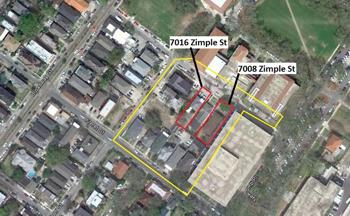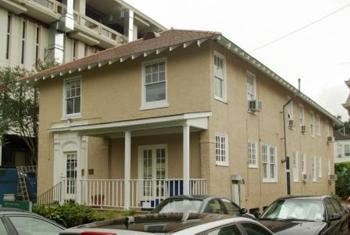

Public Notice Regarding Section 106 and NEPA Review of the Proposal to Demolish 7008 Zimple Street and 7016 Zimple Street New Orleans, Orleans Parish, LA to allow for the Construction of a Roof-Top Expansion of the Howard-Tilton Memorial Library at Tulane University’s St. Charles Avenue Campus - Seeking Public Comment
The high winds and heavy rains of Hurricanes Katrina and the subsequent widespread flooding damaged many buildings in Orleans Parish, LA. In the aftermath of the hurricane, the Federal Emergency Management Agency (FEMA) is issuing this public notice as part of its responsibilities under the Advisory Council on Historic Preservation's (ACHP) regulations, 36 CFR Part 800, implementing Section 106 of the National Historic Preservation Act of 1966, as amended (NHPA). FEMA has also decided to utilize the NHPA Section 106 review process to coordinate its responsibilities, including public outreach, required by the National Environmental Policy Act (NEPA). This notice applies to activities carried out by the Public Assistance (PA) program implemented under the authority of the Robert T. Stafford Disaster Relief and Emergency Assistance Act, 42 U.S.C.§§5152-5206.
National Environmental Policy Act (NEPA), 44 CFR Part 10: It is the intent of NEPA that federal agencies encourage and facilitate public involvement to the extent practicable in decisions that may affect the quality of the environment. The Department of Homeland Security (DHS) and the CEQ established Alternative Arrangements to meet the requirements of NEPA in reconstructing critical infrastructure in the New Orleans Metropolitan Area (NOMA); Alternative Arrangements, Federal Register/Vol. 71, No. 56/Thursday, March 23, 2006. Alternative Arrangements enable FEMA, as a component of DHS, to consider the potential for significant impacts to the human environment from its approval to fund critical physical infrastructure in NOMA. More information on NEPA and the Alternative Arrangements process can be found on FEMA's web page at: www.fema.gov/plan/ehp/noma. National Historic Preservation Act (NHPA), 36 CFR Part 800: The regulations at 36 CFR Part 800 require FEMA, as the funding agency, to identify if 7008 and 7016 Zimple Street are listed in or eligible for listing in the National Register of Historic Places; to assess the effects the proposed demolition will have on historic properties; and to seek ways to avoid, minimize, or mitigate any adverse effects. FEMA has identified that 7008 and 7016 Zimple Street are located within the Uptown New Orleans National Register Historic District (Uptown NRHD). 7008 Zimple Street, constructed c. 1940, is a two-story frame building covered in painted stucco with a hip roof. 7016 Zimple Street, constructed in 1914, is a raised basement bungalow. Both interiors were remodeled by Tulane in the 1980s. FEMA has determined that both structures are contributing properties to the Uptown NRHD. Other historic properties within the Area of Potential Effects (APE) are 7012 Zimple, 1037 Audubon, 1033 Audubon, 7039 Freret, 7031 Freret, 7029 Freret, and 7025 Freret. These buildings were constructed within the period of significance of the Uptown NRHD, retain integrity, and represent a part of the overall period of significance and are contributing properties to the Uptown NRHD. The APE also includes Dixon Hall (U-68), constructed in 1929, a contributing property to the Tulane University of Louisiana National Register Historic District. FEMA has conducted a records search and a site visit in order to identify if archaeological resources may be affected by the proposed project. It has determined that based on all the available evidence, there are no National Register of Historic Places-eligible archaeological deposits in the project area since the area is disturbed, has no visible features or artifacts, and that the chances of identifying a privy, cesspool, or cistern is unlikely. FEMA has determined the proposed demolitions will adversely affect 7008 and 7016 Zimple Street and the Uptown NRHD. FEMA has determined to fulfill its responsibilities under Section 106 of the NHPA through the development and implementation of a Memorandum of Agreement (MOA). The MOA will document FEMA's review of ways to avoid, minimize, or mitigate the adverse effects of the proposed Undertaking. FEMA is seeking input from members of the public on ways to avoid, minimize, or mitigate the potential Adverse Effects. Any member of the public is encouraged to provide views on this project to FEMA. FEMA will accept and consider public comments on NEPA related issues as a part of the Section 106 review. Comments can be submitted to FEMA for a 15-day period beginning on May 2, 2012 by posting online at: http://www.crt.state.la.us/culturalassets/fema106/ (this web site); sending an email to FEMA-NOMA@dhs.gov; or sending a letter through the mail to:
FEMA Mail Center If mailed, comments and requests must be postmarked by May 16, 2012. |



